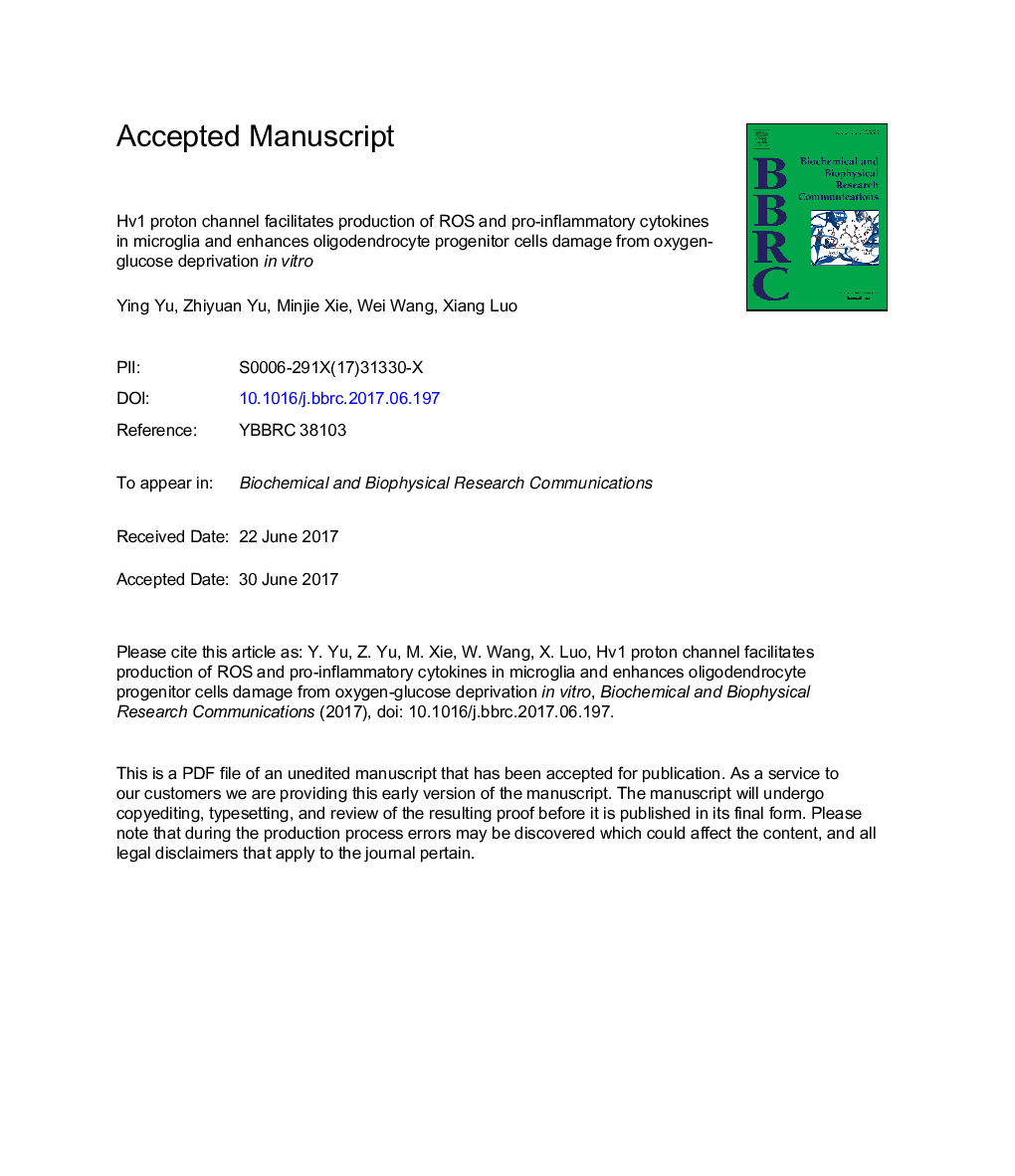| Article ID | Journal | Published Year | Pages | File Type |
|---|---|---|---|---|
| 8293659 | Biochemical and Biophysical Research Communications | 2018 | 34 Pages |
Abstract
The contribution of microglial activation to oligodendrocyte precursor cell (OPC) damage in the brain is considered to be a principal pathophysiological feature of periventricular leukomalacia (PVL). Nicotinamide adenine dinucleotide phosphate oxidase (NOX)-dependent reactive oxygen species (ROS) produced in microglia has been shown to be significantly toxic to OPCs. The voltage-gated proton channel Hv1 is selectively expressed in microglia and is essential for NOX-dependent ROS production in the central nervous system. This study aimed to investigate the effects of microglial Hv1 deficiency on the protection of OPCs from oxygen-glucose deprivation (OGD)-induced injury in vitro. In the present study, the levels of OGD-induced ROS and pro-inflammatory cytokine production were dramatically lower in Hv1-deficient microglia (Hv1â/â) than in wild-type (WT) microglia. Following OGD, OPCs co-cultured with WT microglia had increased apoptosis and decreased proliferation and maturation, while those co-cultured with Hv1â/â microglia had attenuated apoptosis and greater proliferation and differentiation. Furthermore, the attenuated damage and enhanced regeneration of OPCs were associated with decreases in extracellular signal-regulated kinase 1/2 and p38 mitogen-activated protein kinase phosphorylation. These results indicate that the protective effects of Hv1 deficiency on OPCs are due to the suppression of ROS and pro-inflammatory cytokine production in microglia. We thus suggest that the microglial proton channel Hv1 may be a potential therapeutic target in PVL.
Keywords
FITCDCFH-DAOLSIL-1βOGDGAPDHMBPNG2IBA1IgGphosphorylated p38DMEMp-ERKPhosphorylated c-Jun N-terminal kinasep-p38PBSOxygen-glucose deprivation (OGD)EdUDulbecco's modified Eagle's mediumNOxOPCsp-JnkROSneural/glial antigen 2Oligodendrocyteimmunoglobulin GInterleukin-1βELISAEnzyme-linked immunosorbent assaytumor necrosis factor αTUNELstandard error of the meanCNSdichlorodihydrofluorescein diacetateOligodendrocyte precursor cellsPro-inflammatory cytokinescentral nervous systemTNF-αfluorescein isothiocyanatelactate dehydrogenaseLDHPeriventricular leukomalaciaOxygen glucose deprivationPhosphate-buffered salineSEMPVLionized calcium binding adaptor molecule 1Microgliaknockoutwild-typenicotinamide adenine dinucleotide phosphate oxidasepolymerase chain reactionPCRMyelin basic proteinphosphorylated extracellular signal-regulated kinaseReactive oxygen species (ROS)Reactive oxygen speciesoligodendrocytes
Related Topics
Life Sciences
Biochemistry, Genetics and Molecular Biology
Biochemistry
Authors
Ying Yu, Zhiyuan Yu, Minjie Xie, Wei Wang, Xiang Luo,
